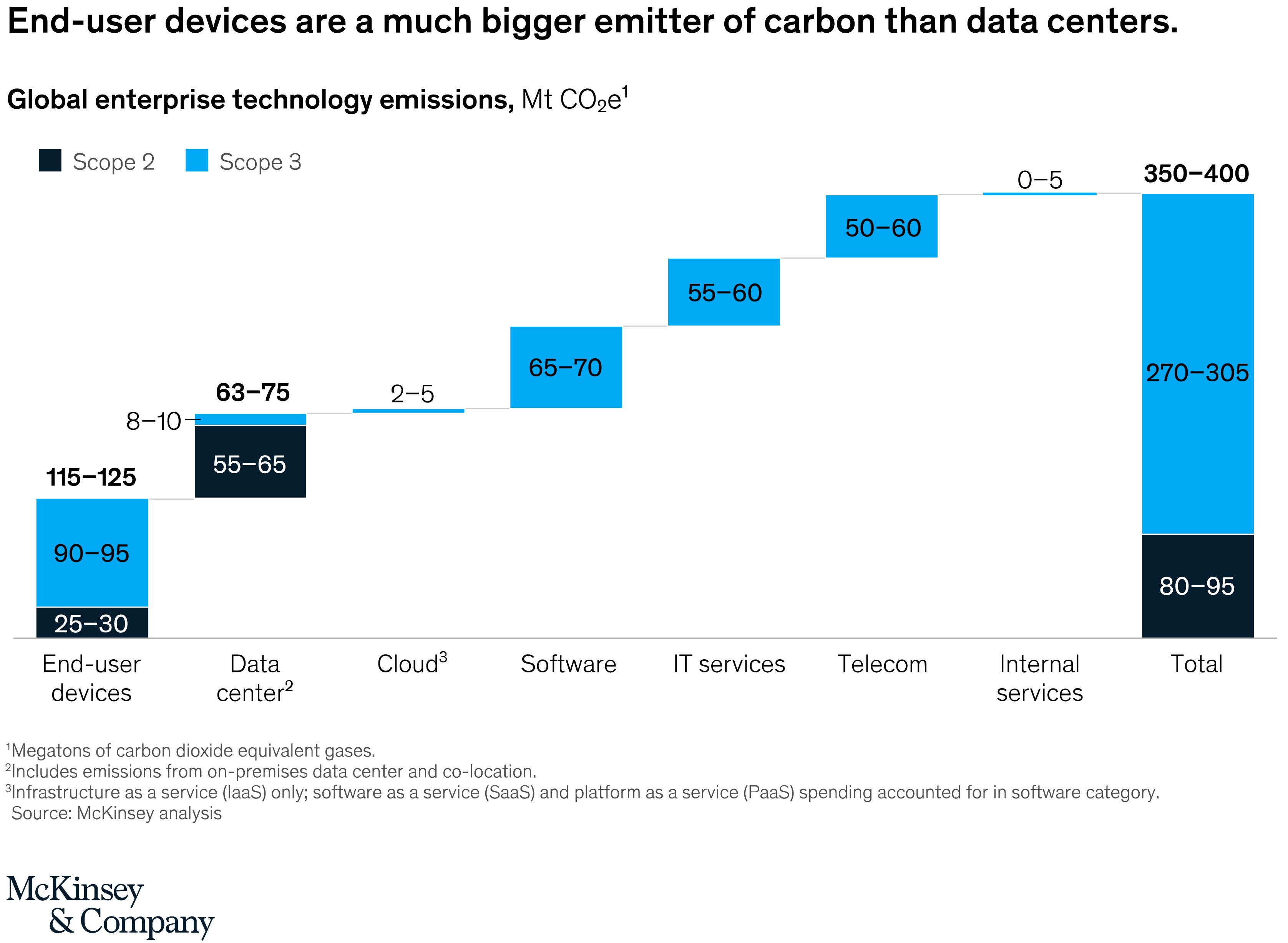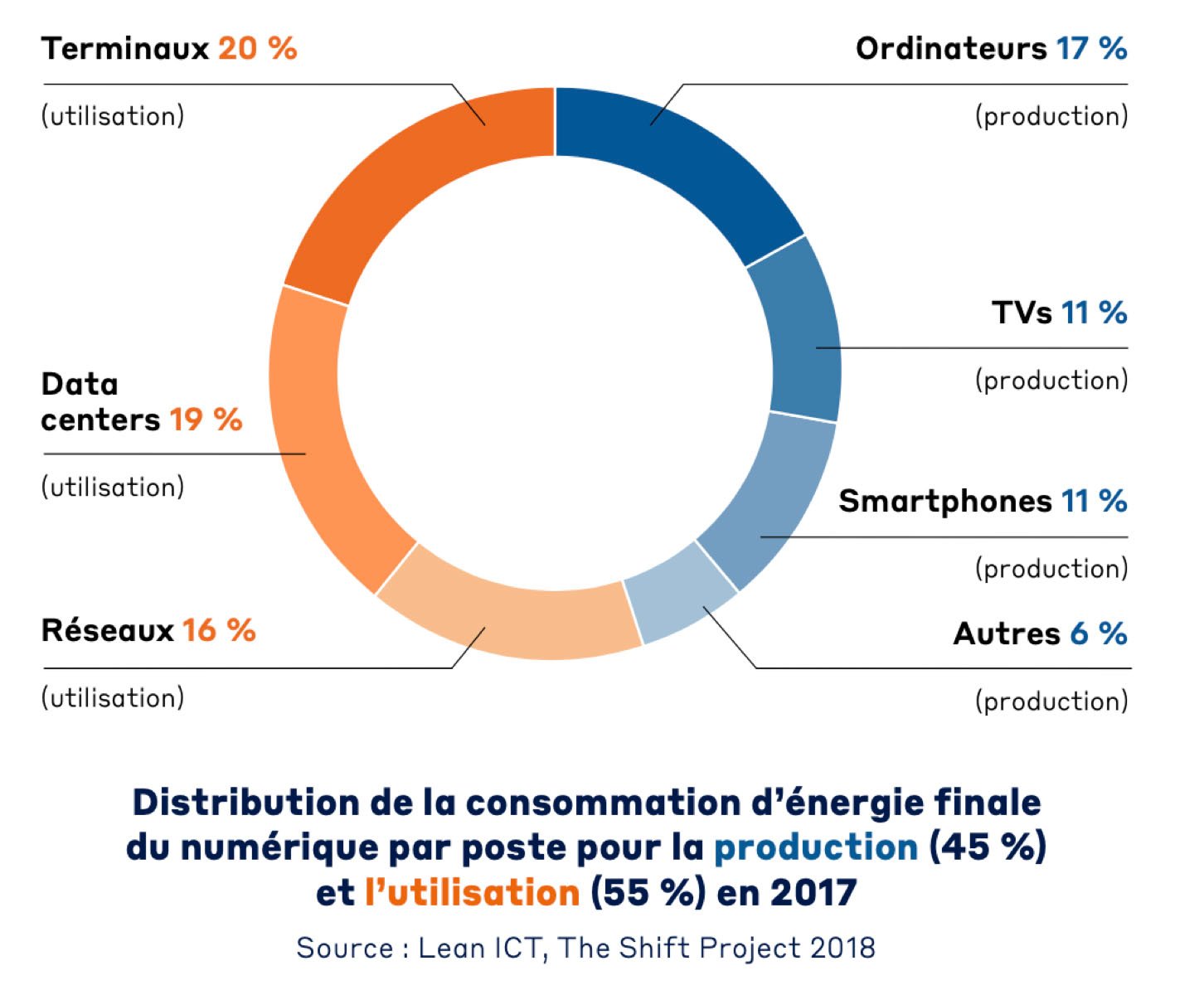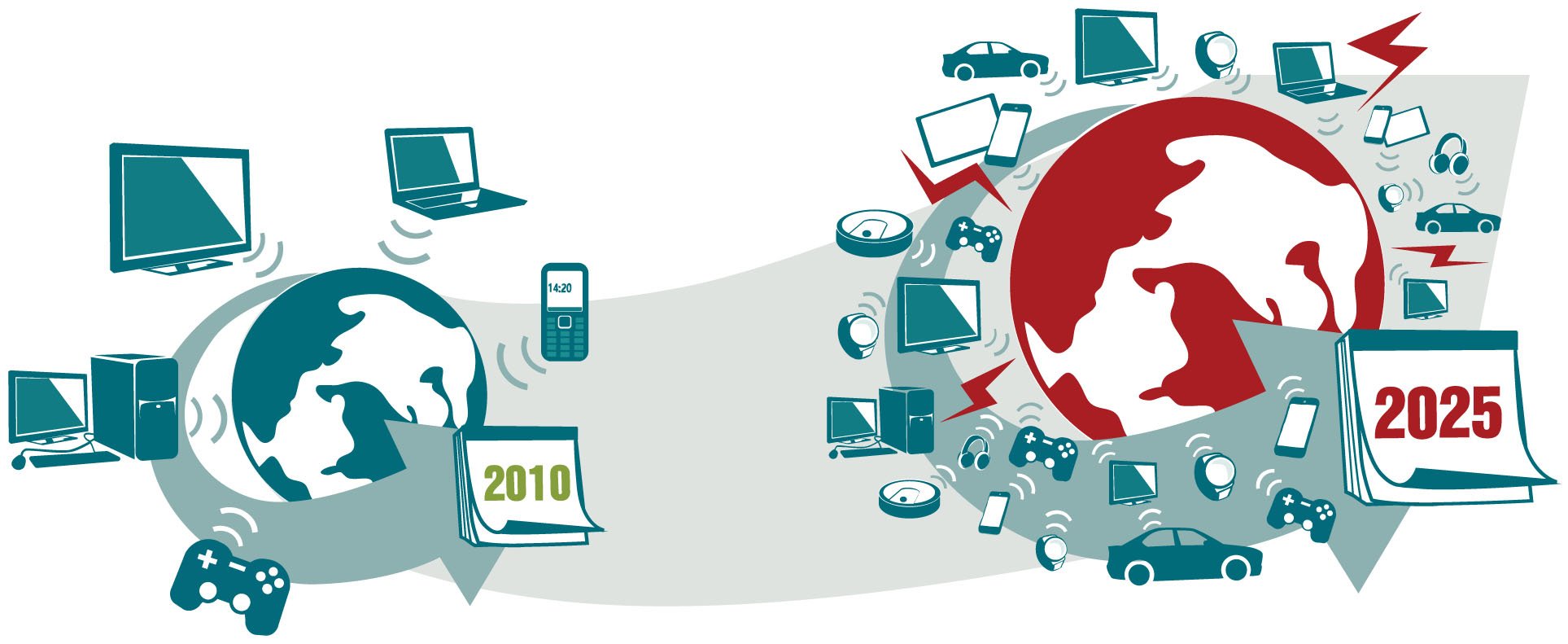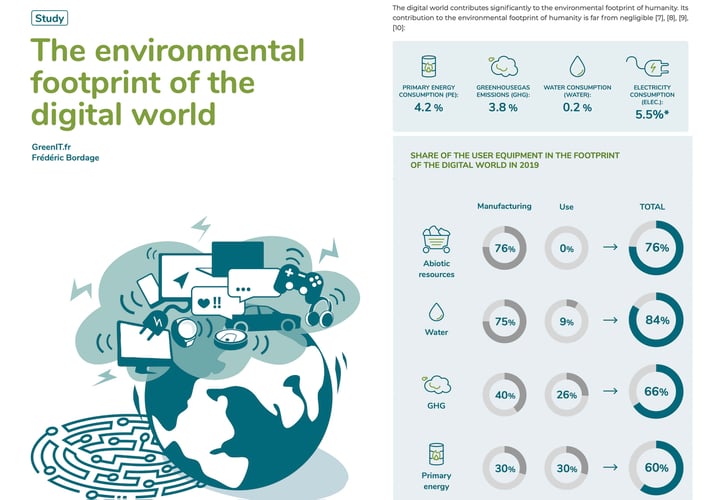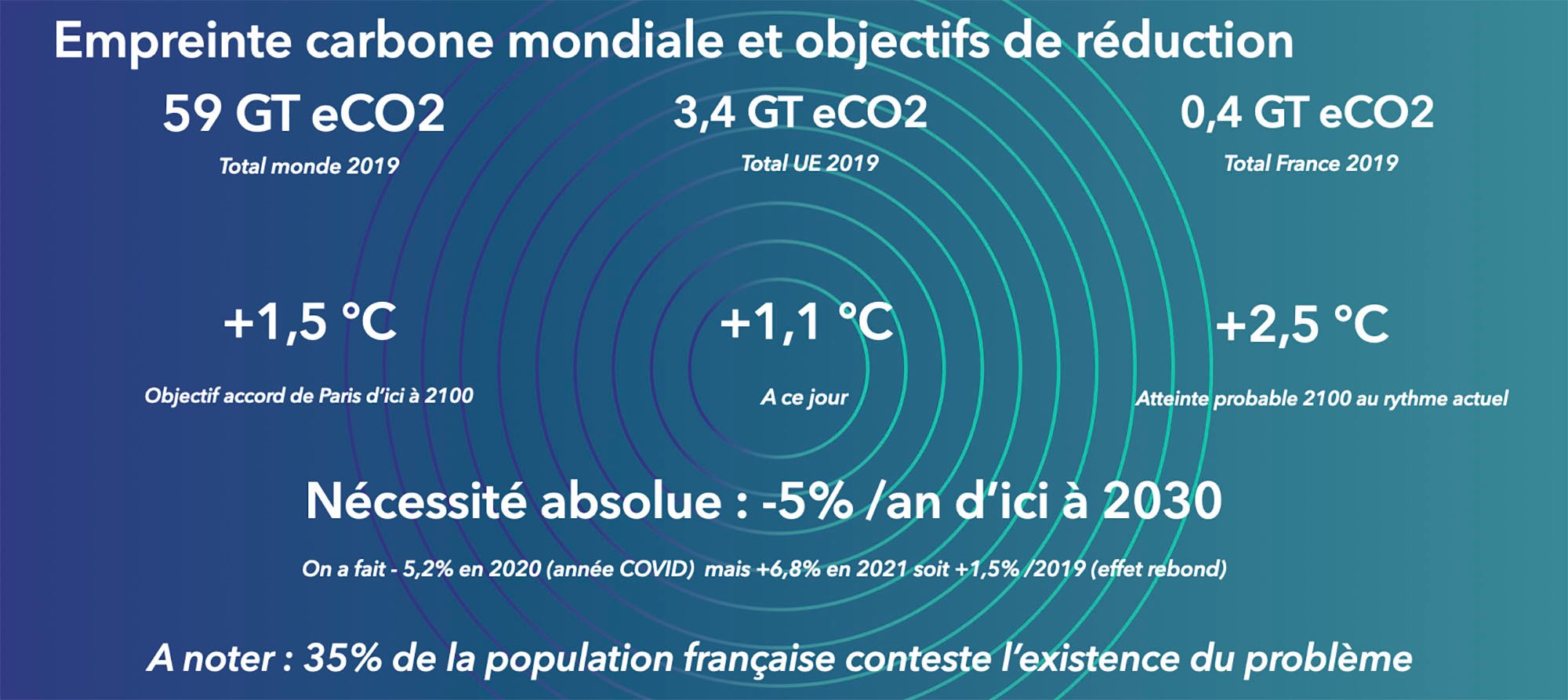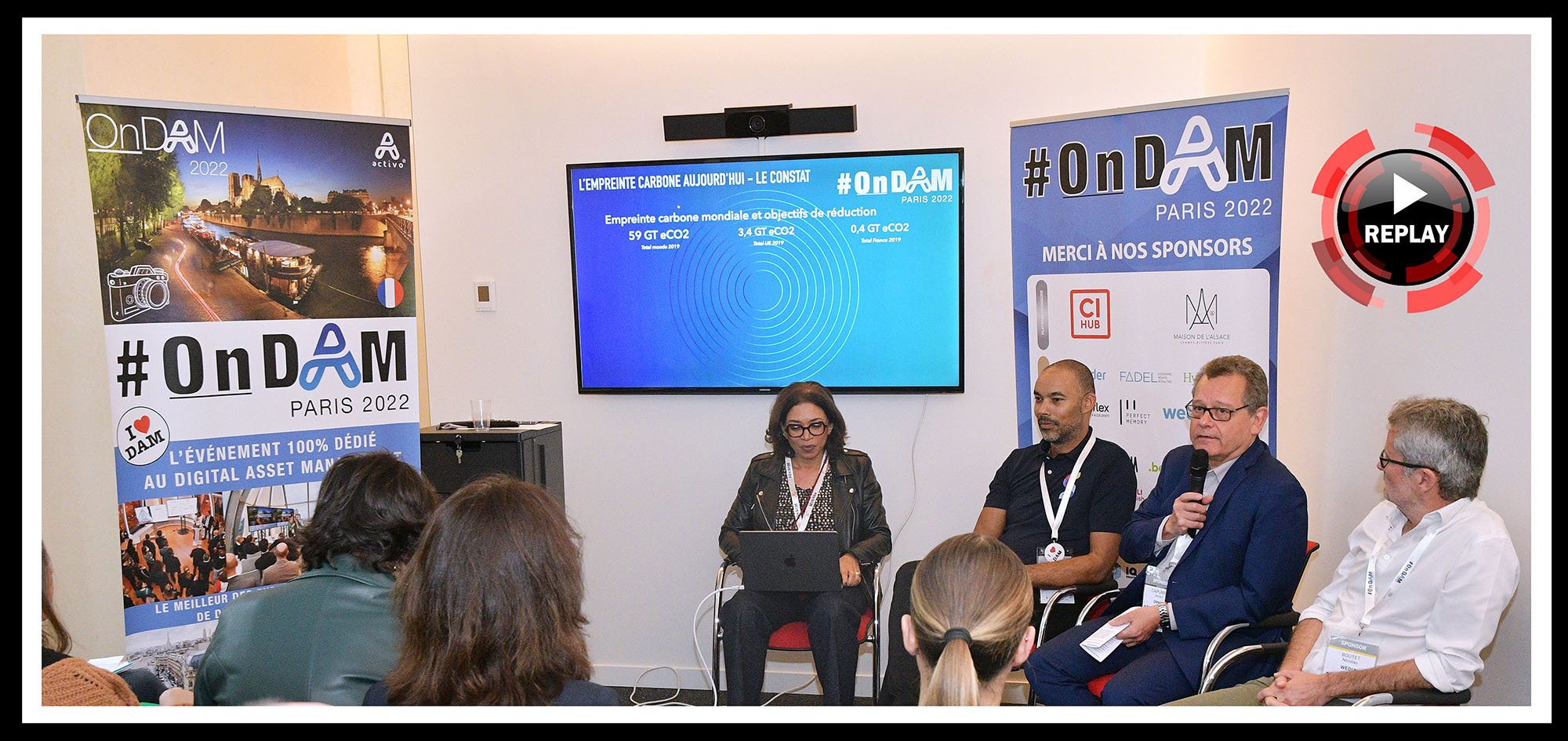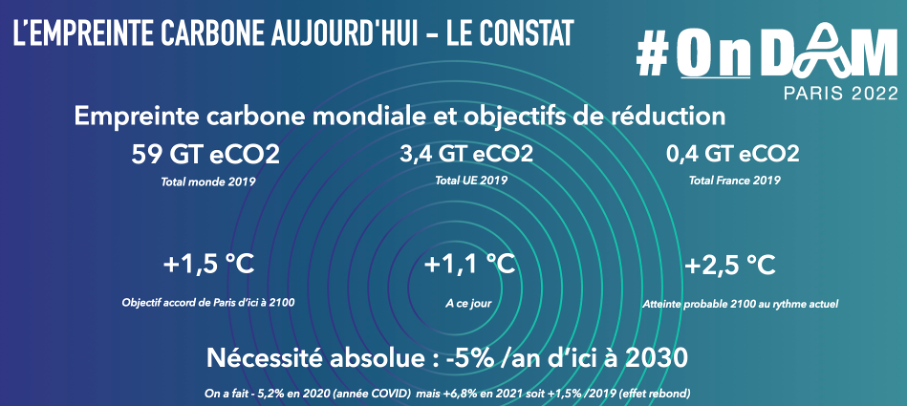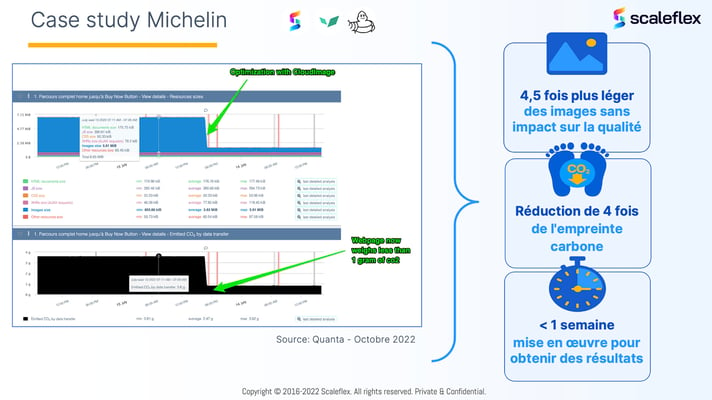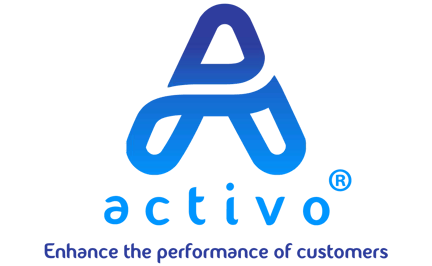Research shows that the greatest impact on emissions generated by information technology is in unexpected places. Businesses and governments looking to tackle climate change are turning to technology for explanations and solutions. AI, new technologies open up and offer solutions.
The technologies are responsible for the emission of approximately 350 to 400 megatonnes of carbon dioxide equivalent (CO2e) gas, which represents approximately 1% of total global greenhouse gas emissions. At first glance this may not seem like a lot, but it is equivalent to around half the emissiosns from aviation or shipping and equals the total carbon emitted by the UK! as the latest McKinsey report shows:
All user devices (laptops, tablets, smartphones and printers) generate 1.5 to 2.0 times more carbon globally than data centers. One reason is that companies have many more end-user devices than servers. Moreover, devices are generally replaced much more often: smartphones have an average refresh cycle of two years, laptops four years and printers five years. On average, servers are replaced every five years.
- The digital world is about 34 billion pieces of computer equipment
- 4 billion smartphones
- 4 billion TVs and other screens
- 20 billion connected objects
- 1 billion internet boxes
- 75 million hosted servers
- 4 billion connected users
Report on the environmental impact of digital and the deployment of 5G from the Shift Project.
Its contribution to the footprint of humanity is far from negligible:
- Primary energy consumption (PE): 4.2%
- Greenhouse gas (GHG) emissions: 3.8%
In absolute value, depending on the indicator observed, the digital footprint doubles or triples in 15 years. This is extremely rapid progress.
The impact of digital is therefore not without impact on the planet. Frédéric Bordage explains it in detail in a report that we recommend reading.
Digital technology is responsible for 4% of greenhouse gas emissions globally and nearly 10% in 2030.
First of all, when we talk about the carbon footprint of a sector, we are talking about the greenhouse gas (GHG) emissions induced by that sector.
Thus, applied to digital, the carbon footprint refers to the quantity of greenhouse gases translated into carbon dioxide (CO2e) emitted by activities related to information and communication technologies (ICT).
In concrete terms, understanding the carbon footprint of digital technology means understanding the impact of digital technology on global warming, as presented in the Carbo report.
Some carbon footprint figures [ADEME] (Orkis)
Hence digital equipment accounts, according to ADEME, for 47% of greenhouse gas emissions in the sector and its manufacturing phase has the most impact, more so than its use. If the sector is working towards dematerialization, energy needs increase exponentially.
ARCEP in its last annual survey of 2022 publishes interesting information for our sector:
Optical fiber is the least greedy of all technologies but it has more than 20,000 km of cables which absorb nearly 90% of data exchanges!! Fixed and mobile satellite networks represent less than 1% of total electricity consumption in France. But the energy they consume increases by an average of 5% each year.
It is the same for data centers which are increasingly large up to a few million square kilometers and where half of the energy is used to cool it. This impact is estimated at 25% of emissions due to digital technology according to ADEME.
In view of this observation, what about the DAM? And more broadly distribution tools and image services?
DAM actors, let's commit together for a Sustainable DAM!
DAM actors, let's all be little hummingbirds together and enagage to a Sustainable DAM!
One day, says the legend, there was a huge forest fire. All terrified animals, aghast, watched helplessly disaster. Only the little hummingbird was busy, fetching a few drops with its beak to throw them on the fire. After a while, the armadillo, annoyed by this ridiculous agitation, said to him: “Hummingbird! You're not crazy ? It is not with these drops of water that you will put out the fire! »
And the hummingbird answered him: “I know it, but I do my part. »
Amerindian legend taken up by a great man Pierre Rabhi who worked all his life for the planet.
"I do my part"
This sentence accompanies many people already concerned about the future of our planet and it can very well apply to the community that was born on OnDAM Paris 2022 🇫🇷, on the occasion of the conference "Sustainable DAM & carbon footprint" and which reflects the involvement of a good number of DAM players in reducing the carbon footprint of our tools and our companies.
What is "Sustainability" and how can it be applied to DAM?
The ecological definition of sustainability comes from the Brundtland report written in 1987 and describes sustainable development as a mode of development that meets the needs of the present without compromising the ability of future generations to meet theirs
.
On the occasion of OnDAM Paris 2022 🇫🇷, three vendors also involved, Nicolas Boutet CEO of Wedia, André Capurro, president of Orkis and Jean-François Lecas Global Services & Operations at Scaleflex shared their vision of Sustainable DAM: what are the levers, functionalities and processes that allow them to develop their solutions so that the carbon footprint of their clients' platforms decreases?
Can we calculate the carbon footprint of each DAM platform installed?
First of all, note that it is possible to calculate or have your publisher calculate the carbon footprint of your platform. Wedia provides clear and meaningful results:
29 TeqCO2/year for a DAM of this size/activity corresponds to 29 A/R Paris-New-York…
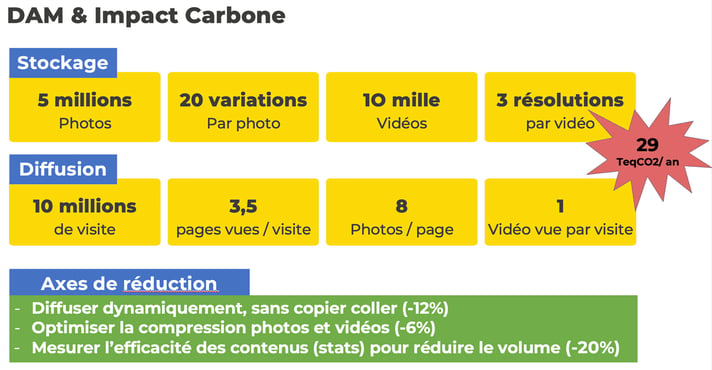
How to make our DAM industry more virtuous?
Still on OnDAM Paris 2022 🇫🇷 and during the DAM Durable conference, Jean-François Lecas Global Services & Operations at Scaleflex presented the axes of evolution of their cloud image solution for the distribution of media from a DAM:

Scaleflex was able to measure the effects of optimizing syndicated images on Michelin websites.
And Nicolas Boutet CEO of Wedia shared the areas for reducing the carbon footprint:

Our industry is also growing a lot with AI. AI is energy-intensive since by definition it relies on millions of data to train
How to optimize its exploitation in our Sustainable DAM project when we know that it brings a lot in the classification and distribution of media?
How can we support Brands to move towards Sustainable DAM?
First and foremost: let's not feel guilty and move at the pace that is possible for each organization.
This work involves the support of all impacted teams: content producers, contractors, COM and Marketing teams, CIOs and media consumers!
- If you do not yet have a DAM system or image distribution services: equip yourself for the benefits they are known for: rapid and secure centralization and distribution of media "deliver the right media on the right medium, to the right time, in the right format and to the right people”
- Complete in your table of functional requirements those that can help you set up DAM with an optimized carbon footprint
- Management of transformations / renditions: beyond the formats essential to the manipulation and consultation of the media through the DAM, maximize generation on the fly
- Compatibility with standard formats recognized as being optimized (weight / quality)
- Do not neglect the power of the search engine and the ease of finding available media (relevance), this will increase the reuse of assets and prevent the user from storing their favorite assets in a "shadow media library"
- Finally, take the time to involve the teams concerned in the quantity of assets produced, the usefulness of each media, each format
- On the management of the life cycle of these assets with the DSI teams
This work can be done before, during the RFP phase or during the deployment of the chosen solution. The most complicated thing at this level will be to create team support for different working methods, which may be a little more restrictive, but it is essential in this reflection that each team thinks about how to reduce its carbon footprint.
⁃ An analysis of your solution / its deployment within your organization will allow the evaluation of its carbon footprint with the help of its editor and to provide advice on flow optimization - format-storage-distribution in consultation with the business teams and the sponsors
Another complex subject to implement: the carbon footprint of production management:
⁃ How and where are the shots taken? : It is not always useful to cross the planet to do shootings for example
⁃ Optimization in the validation phase (exchanges and storage of different versions of the same asset)
⁃ The life cycle of non-chosen files (non-choice)
Wedia, in its article dedicated to the development of a sustainable marketing strategy, talks about Evergreen content, to be stored in a DAM:
If you're trying to reduce the amount of content you produce in order to decrease storage and bandwidth, it's worth focusing on creating evergreen (persistent) content.
Evergreen content is content that remains relevant months or even years after it is published. So the idea is to create topics that are extremely relevant to your business, that give detailed information to your audience. Choosing an evergreen marketing strategy means producing high quality content rather than small informative content delivered regularly.
The added benefit of creating evergreen content is that it will continue to generate views long after its publication date, and therefore traffic for this type of content grows over time. This means that this type of content also supports your SEO strategy, and helps you attract more people to your website.
With our publishing partners, we are pleased to announce the launch d’Activo Green !
Activo Green aims to bring together the major players in DAM and media distribution who wish to:
- Develop their systems and/or communicate around the reduction of the carbon footprint that their solution allows / will allow
- Share best practices and feedback from everyone
- Define together the changes in working and organizational methods and how to support the brands in this change, with the involvement and participation of all.
Activo, already a consulting partner to help companies choose an appropriate DAM solution as well as its deployment, will bring its reflection on working methods, business actions and change management to ensure that this decision taking into account the Sustainable DAM meets the initial needs of users while bringing great satisfaction to see its carbon footprint optimized
For this, we will develop this community in 2023 through two conference-workshops, a restitution of which will be provided during OnDam Paris 2023 🇫🇷 on November 21 and 22, 2023.
Publishers, consultants and brands, let's be Pierre Rabhi's little hummingbird and move the subject of Sustainable DAM forward together!
Want to know more about the Activo Green community? Attend the next conference? Bring your testimony and help move the subject forward?
Glossary :
- Global digital environmental footprint
- Full Report - Summary
- Ademe
- Digital pollution: An assessment of the impact of influencer marketing
- How to develop a sustainable marketing strategy?
- What is the environmental impact of digital technology?
- The green IT revolution: A blueprint for CIOs to combat climate change
- A guide to your digital carbon footprint – and how to lower it
- Digital Carbon Footprint: The Current State of Measuring Tools
- Website Carbon Calculator
- Smartphone




